|
 Case Histories: Synthetic Seismograms
Case Histories: Synthetic Seismograms
Plenty
of synthetic seismograms have been published in the
geophysical literature. Here are a few to illustrate the
variety.
 Wabamun
Salt
Wabamun
Salt
This example is taken from "Geophysical Aspects of Wabamun
Salt Distribution in Southern Alberta", by N.L. Anderson,
R.J. Brown, and R.C.Hinds, CSEG Journal, Dec 1988. The example
shows sonic logs for two wells, one with Wabamun and Cairn salt
beds, the other without. Both sonic logs have noise and spikes
which should have been edited.
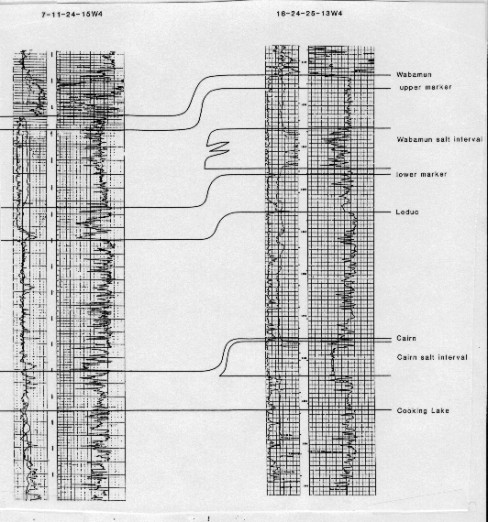
Wabamun example - raw logs
The
synthetic (top) shows a model with two salt layers
based on sonic data only. Adding the density data increases the
amplitude of the reflections. Comparison of the models make
it relatively easy to itemize the characteristics of salt and
salt free cases. Notice that the wavelet frequency is critical
to identification of the formation tops.
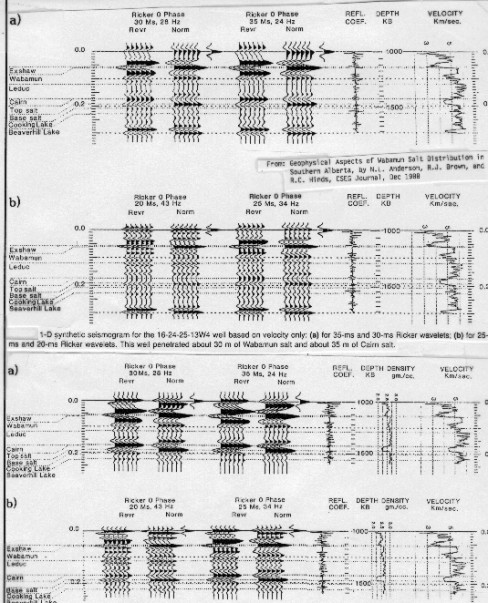
Synthetic with salt layer - sonic only (top),
density added (bottom)
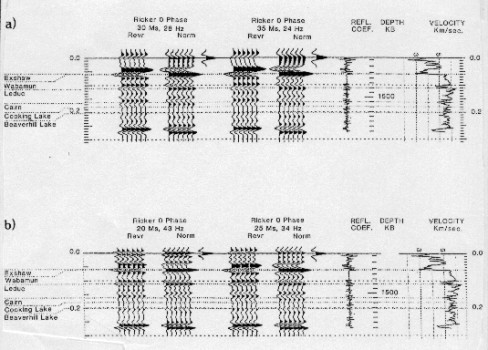
Wabamun example - no salt case
The
model below portrays a synthetic seismic section based on interpolation
of the sonic logs between the salt and salt free cases. The model
would be improved by use of density data augmenting the sonic.
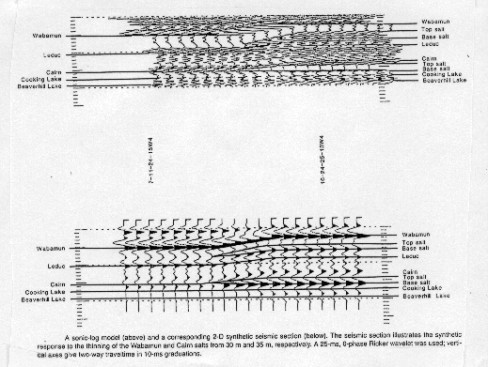
Wabamun example - synthetic seismic section
 Swan Hills/Beaverhill Lake (D-3) Reef
Swan Hills/Beaverhill Lake (D-3) Reef
This model shows the capability of a particular commercially available
seismic modeling package (GMA). The system takes edited and
modeled well log data as its basic input. The stratigraphic
cross section is digitized, along with the log data, or is
derived from well history data in the data base.
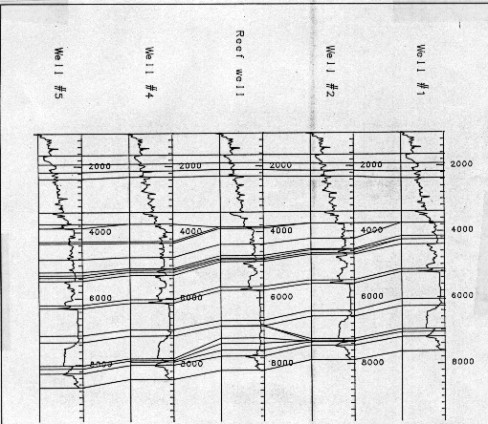
Correlated stratigraphic depth cross section
In
this example, the reef was edited to a geologically believable
shape. The acoustic impedance cross section is
then computed and displayed. This cross section
uses raw sonic log data that has been interpolated between well
control. The sonic logs may need editing for bad hole, casing,
rock alteration, or gas effects. If gas or carbonates are present,
the model should incorporate density information as well.
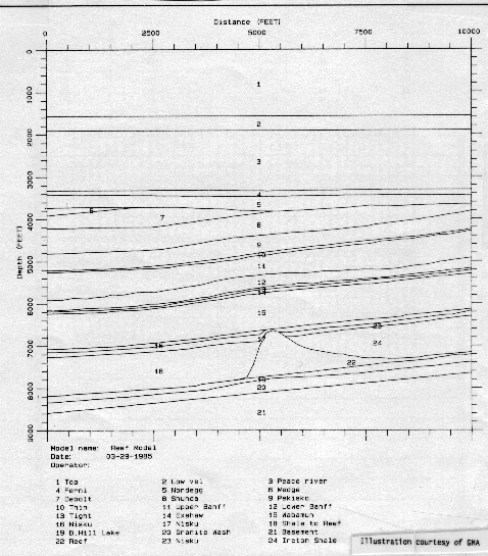
Edited correlations and hypothetical reef
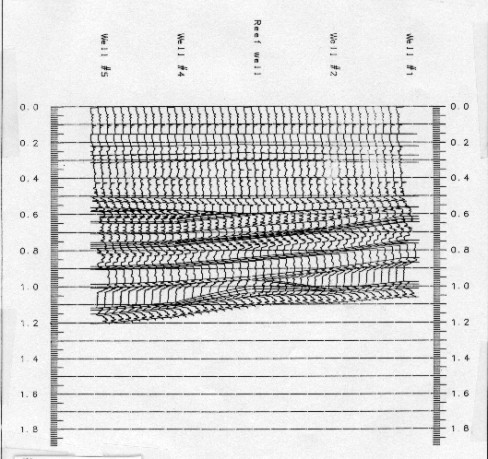
Acoustic impedance cross section
A
synthetic seismic section is calculated by creating reflection
coefficients from impedance and convolving a wavelet with each
modeled trace.
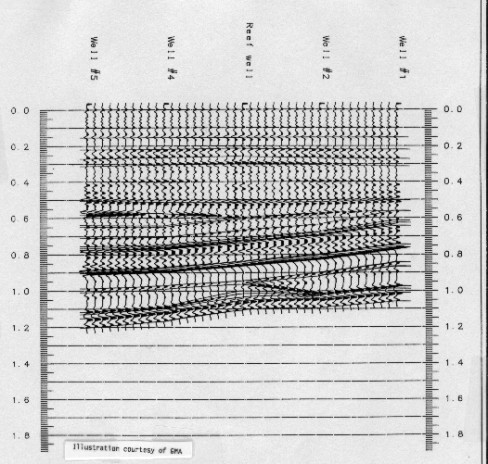
Synthetic seismic section
This
is the usual form of synthetic modeling, but this example used
logs which received no editing or correction for invasion. If
the reef contained gas or had higher porosity than the platform
rock, the synthetic section would be wrong because the modeled
velocity and density would be wrong.
Thus
a number of different formation models could be created. The seismic
response of the models can be compared to each other and to field
data using discriminant analysis or frequency analysis techniques
or, more commonly, by visual inspection. If sufficient discrimination
between various models can be detected, then the comparison of
these models with field data should provide a valuable interpretation
aid.
Another
form of modeling is ray path tracing, a time consuming
computer solution. The ray paths to each key horizon are computed
from the laws of refraction, and a synthetic section is prepared
using the noise free reflection coefficients at each layer modeled.
Both normal (perpendicular) and vertical incidence sections are
displayed in this example. These are
used to judge the quality of the reflections to be expected from
the steeply dipping beds.
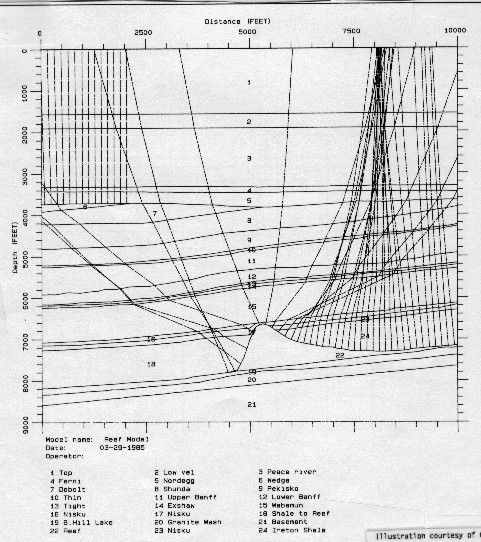
Ray path tracing on reef model
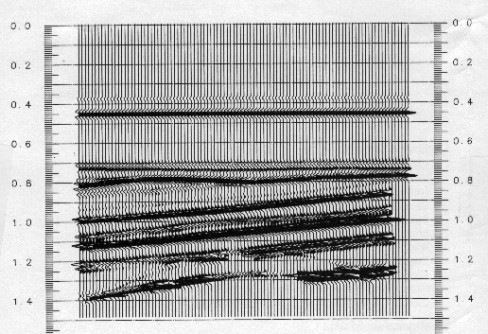
Synthetic seismic section from ray path tracing
- normal incidence
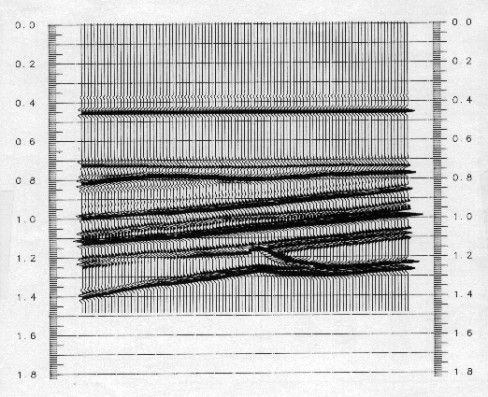
Synthetic seismic section from ray path tracing
- vertical incidence
 Keg River (Granite Wash) Sand
Keg River (Granite Wash) Sand
This example is taken from "Seismic Perspective on Panny
and Trout Fields of North Central Alberta", by N.L. Anderson,
R.J.Brown, and R.C.Hinds, CSEG Journal, Dec 1989. This example show sonic log models for a thinning lower anhydrite
contrasted with a thinning lower clastic. These models help interpreters
determine which case might be more likely on a seismic section.
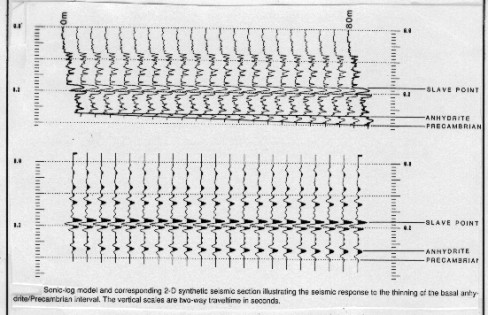
Keg River model - thinning anhydrite
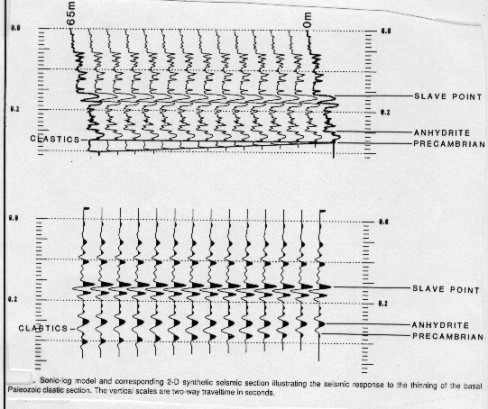
Keg River example - thinning sand
A
typical synthetic seismogram is given below as well
as a geologic cross section from logs. The seismic model, synthetic
section, and real seismic section follows. The
basement high and surrounding basal sand are the key elements
in this model. Note that there is no significant reflection from
the bald high because the evaporites above mask the event. The
model would be more realistic if density data were incorporated.
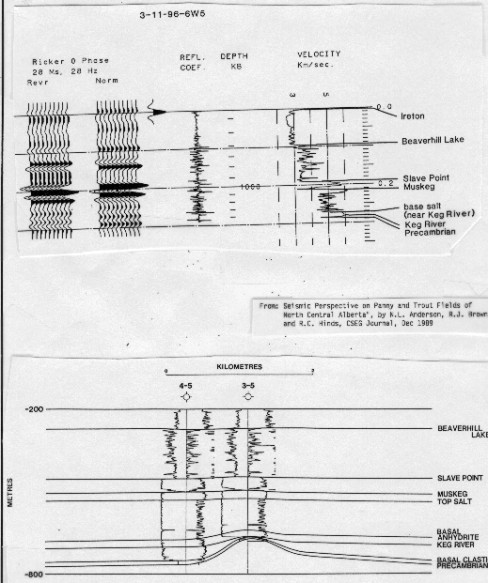
Keg River synthetic seismograms and log cross
section
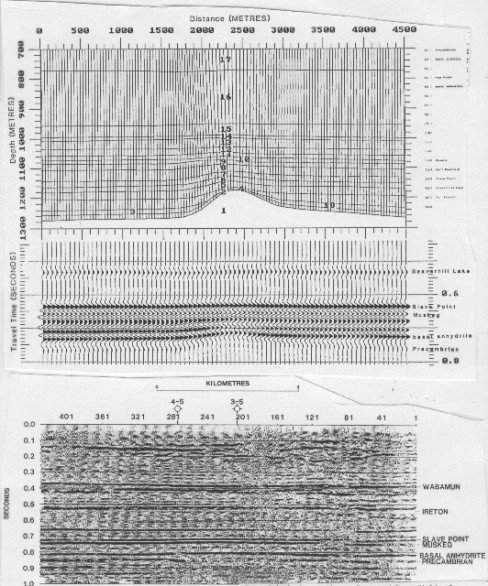
Keg River synthetic section and real seismic
 More Sophisticated Models
More Sophisticated Models
Seismic modeling programs can generate the diffraction patterns
from steep events, so that their interfering effects can be assessed.
This example shows such a case. Here the diffractions might
be mistaken for reflection on an anticline instead of the structural
low that really exists.
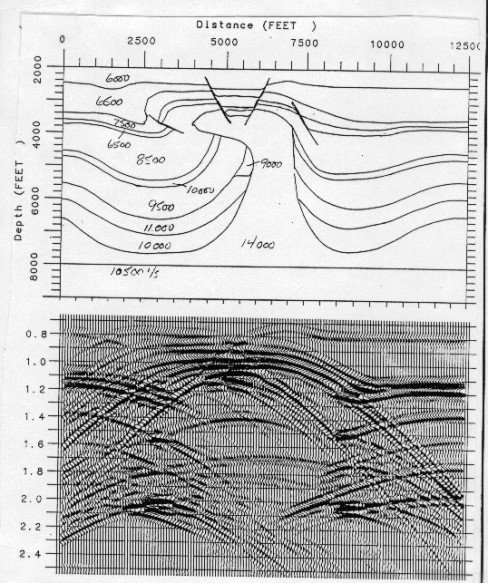
Modeling refractions from steeply dipping beds
Stratigraphic
traps, such as channels, beaches, and bars can also be modeled
by using adequately modeled log data.
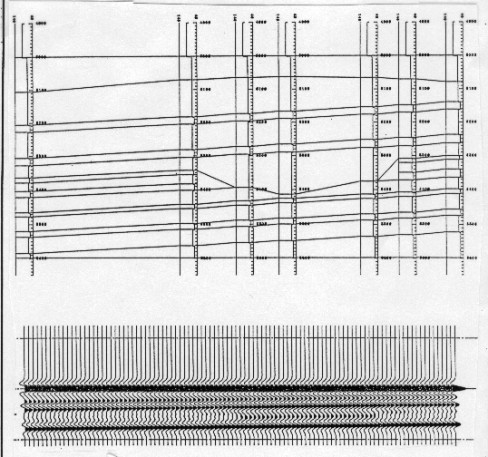
Stratigraphic trap model
|

